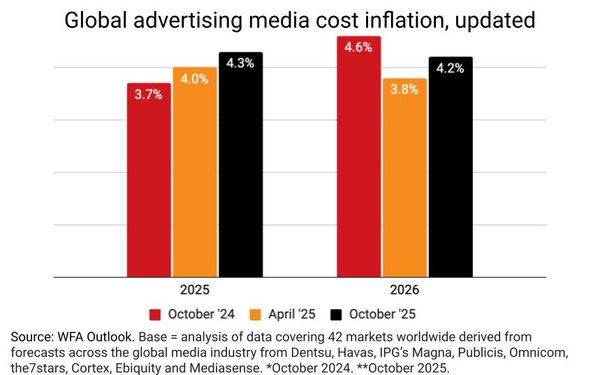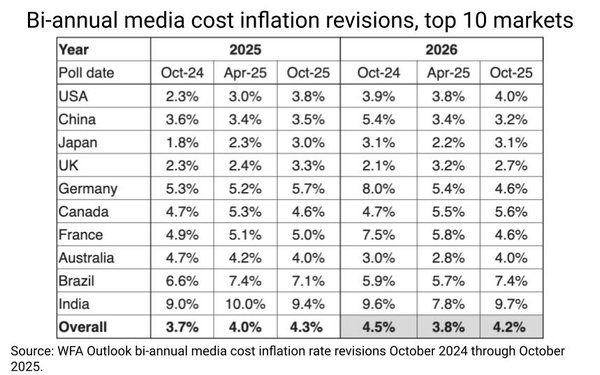
Global media costs have risen half a point to an annual
inflation rate of 4.3% for the ad industry in 2025, according to a just-released World Federation of Advertisers (WFA) compilation of data from leading industry forecasters compared with what was
forecast a year ago.
The report, "WFA Outlook," forecasts that 2026 media cost inflation will moderate four-tenths of a point to 4.2% for the global advertising marketplace vs. what was
forecast a year ago.
The report analyzes 42 markets (see data on the top 10 markets revisions below), and was compiled from data provided by Dentsu, Havas, IPG's Magna, Publicis, Omnicom,
the7stars, Cortex, Ebiquity and Mediasense.
The data indicates that media costs for advertisers in the U.S. have risen half a point to a 3.8% rate of inflation for this year and are forecast
to rise a tenth of a point to 4.0% rate of inflation next year.
advertisement
advertisement
"The consequence is that advertisers face sustained, embedded media inflation, with the new 4% global trend line signaling that
the global media economy has settled into a new normal of moderate but persistent inflation, mirroring the wider economy," the WFA notes in this morning's release, adding: "The headline rate also
hides a number of starker contrasts between regions and channels, highlighting opportunities for advertisers to identify smarter ways to invest their ad budgets."
The report finds that "video
remains king," adding "but not all screens are equal" and noting:
"While broadcaster video-on-demand commands the strongest price inflation of any channel (around +5% per year), Prices
for Connected TV (CTV) are almost flat (~+1%). WFA Outlook contributors say supply is still running ahead of demand, and even in the US, the most mature market, price increases are moderate."
It also found "surprising resilience" for linear TV media prices, with linear TV media costs rising 5%, "though in many countries this is explained by the steadily erosion of viewing; particularly
of audiences which are scarcer and in higher demand."
